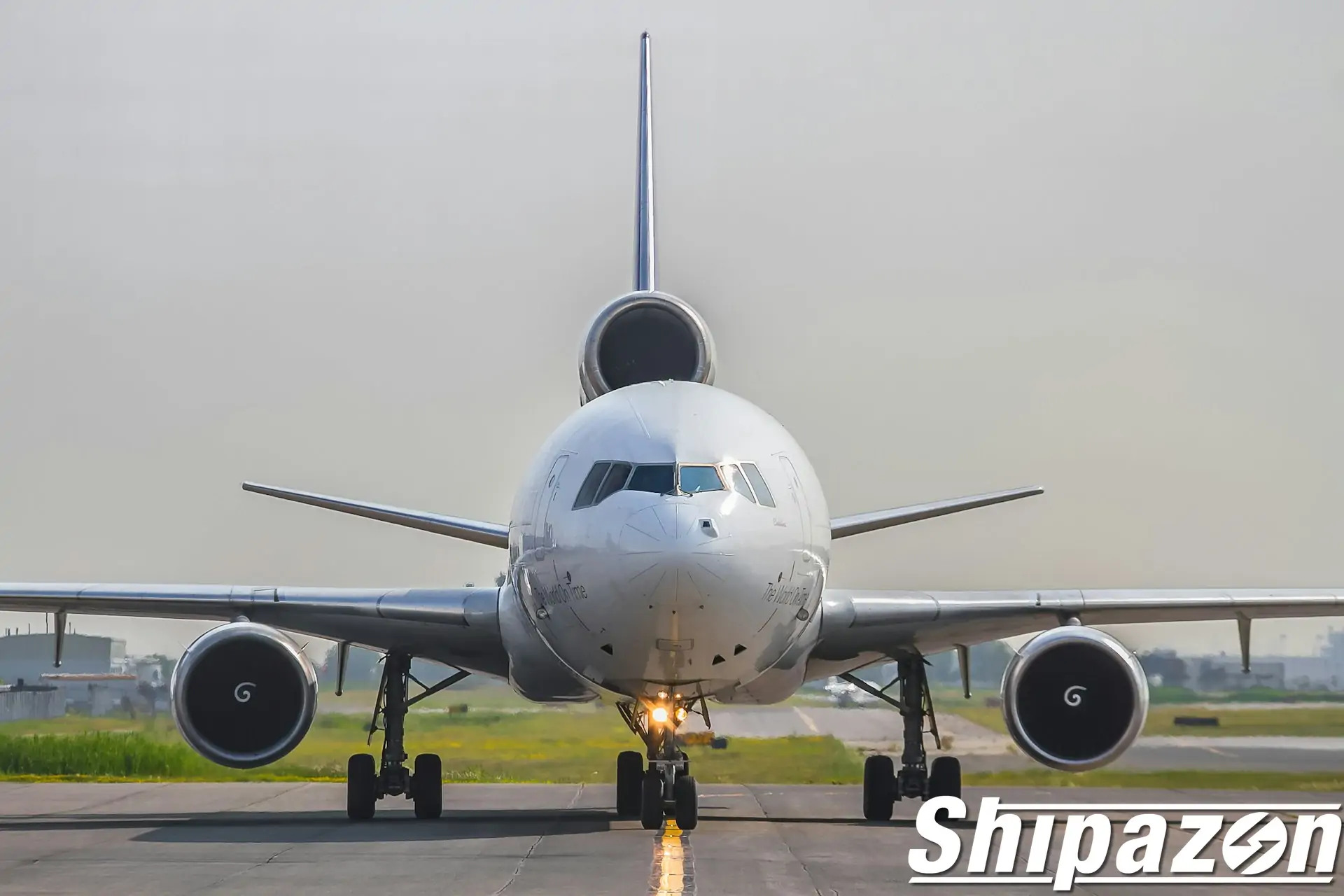Air transportation has become the backbone for the modern logistics system in the era of globalization and digitalization, which demands speed and precision. Air freight is one of the most vital forms of air transportation in business and international trade. While it is not always the cheapest, it’s unbeatable in terms of time. (If you’re looking for a slower but more cost-effective alternative, check out our article on ocean freight).
Types of transportation of goods through commercial aircraft or special cargo aircraft. This mode has become the leading choice for many companies when they need to ship goods quickly, safely, and efficiently.
This type is a method of transporting goods by aircraft. This service is usually provided by a special cargo airline (Freighter) or a passenger airline providing cargo space at the bottom of the cabin (belly cargo). Goods sent by air transportation can include important documents, medicines, industrial parts, and electronic products that require fast delivery and maximum protection.
Contents
Strategic Role of Air Freight In Global Logistics
Shipping goods by air plays a very strategic role in supporting the global supply chain, especially for industries oriented towards speed and reliability of services. The main advantage of air transportation is its ability to cut delivery time. Normal time, usually weeks, becomes only a few hours or days.
This type of preaching has a much faster transit time than sea or land shipping. Air transportation modes help companies avoid delays in production, distribution, and customer service. For example, in the medical industry or manufacturing technology, the delay in shipping factors can become a substantial financial loss, and even pose a potential risk to patient safety.
Air Freight is essential in the global logistics system because it can connect various cities and countries in hours to days, not weeks like marine or land modes. Air transportation is the first choice in industries that demand high speed and precision, such as technology, health, and automotive.
Another example is when manufacturing companies require critical components from different countries. These needs must be met in a short time to prevent the cessation of the production line. So, shipping by air is the most rational solution. This speed is what makes this transport mode very crucial in supporting the smooth supply chain of Just-in-Time (JIT).
Types of Goods That Are Commonly Sent Via Air
Not all types of goods are suitable to be sent by air. However, some categories of goods are ideal for this shipping method because of the product’s economic value, urgency, or sensitivity.
The first type is high-value goods. Items such as jewelry, premium electronic devices, engine parts, and other luxury products are often sent via air to reduce the risk of damage and theft. It is the primary consideration because of its high value, fast transit time, and extra security.
Important documents become the following type of item. Multinational companies, legal firms, and financial institutions often rely on air shipping to ensure essential documents arrive on time. Legal documents, business contracts, or international certificates must be delivered quickly and reliably, making air transportation the first choice.
Next are medical and pharmaceutical products. Items such as vaccines, drugs that require a cooler, organs for transplantation, and sensitive medical devices depend on speed and timeliness. Time is a determining factor in medical emergencies, so air transportation is the leading solution.
Factors That Affect Air Transportation Costs
The cost structure is one of the most important considerations when choosing this service. Air transportation tends to be more expensive than other modes of transportation. However, this cost is comparable to the speed and efficiency offered. Several main factors that affect the shipping rates by air include chargeable weight, delivery distance, flight routes, and types of services (express, regular, door-to-door).
Weight and Volume of Goods (Chargeable Weight)
In the logistics industry, air shipping rates are determined by the actual weight of an item and the physical volume. The term “chargeable weight” refers to the weight charged, which is the actual or volumetric weight, whichever is greater.
Actual weight (actual weight) is the weight of goods directly weighed. Volumetric weight (dimensional weight) is calculated by the standard industrial formula (length x width x height). If the item is light but tremendous in volume, the tariff will follow the volumetric weight, because it takes up more space on the plane.
Delivery Distance and Flight Route.
The destination of shipping is getting further away, the higher the tariff. International shipping cross-continent will undoubtedly be charged much higher than domestic delivery. In addition, indirect flight routes or transit at many airports can also increase costs due to additional treatment and time. Some countries or major cities have direct flight paths that reduce costs, while remote areas without international airports can cause a surge in tariffs.
Type of air transportation service
The type chosen is the third factor. Air shipping services are available in several categories, which significantly affect prices. Express services (express) are the fastest service, shipping within 1 to 2 days. This type of service is suitable for very urgent goods. Next is a regular service (standard), which is a more economical type of service. Shipping time requires 3 to 7 days.
Door-to-Door services are the third type. Door-to-Door is a type of delivery from the sender’s warehouse to the final recipient’s address. This includes local pickup and distribution.
This service offers more comfort, but usually at a higher price. The selection of services should be tailored to business needs and shipping urgency. Express services are suitable for critical goods, while regular services are more suitable for non-dear goods that need to be sent relatively quickly.
Air Freight offers a significant advantage in speed, safety, and global reach, making it a strategic choice for shipping high-value goods, essential documents, and medical products requiring fast and sensitive treatment. Although the cost is higher than other modes, the logistics benefits can add significant value for the business.


